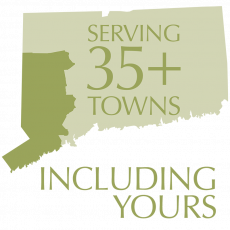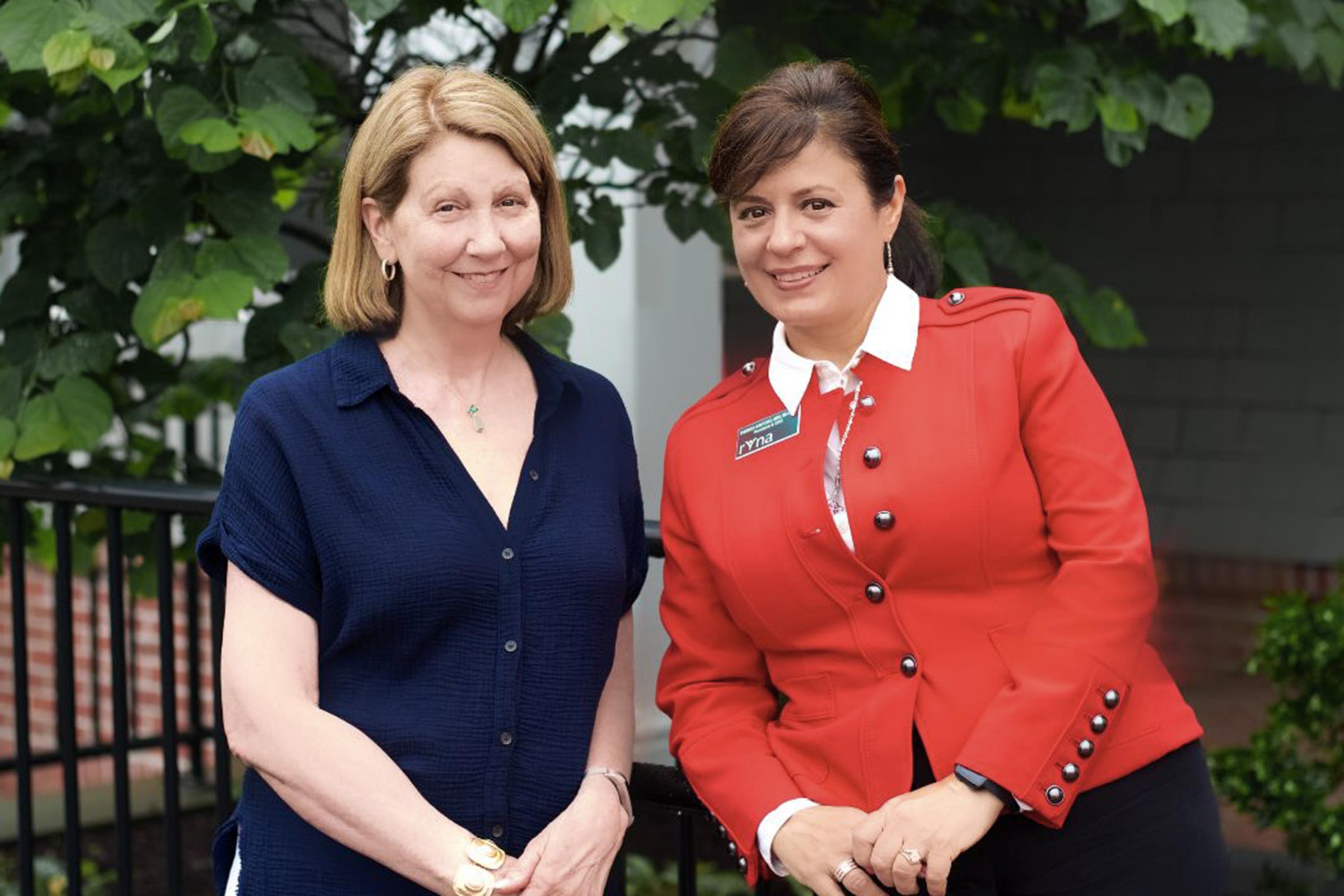Brand New Day. Brand New …
Preparing for Joint Replacement Surgery
Let’s talk about that dreaded moment … when knee pain prevents you from getting into the car. Or your hips are so sore that putting on socks seems impossible.
If this sounds familiar, you’re in good company. By 2030, about 11 million Americans will have either a hip or knee replacement — making joint replacements one of our most common elective surgical procedures.
Being prepared in advance, and receiving the right care immediately following, is key to an excellent recovery, according to Crystal Madyda, PT, RVNAhealth Rehabilitation Services Team Lead.
“Patients used to spend days in the hospital, and then weeks in a short-term rehab facility,” Madyda says. “Now, most spend a maximum of two days in the hospital, followed by in-home therapy and then outpatient care. People tend to do better at home; hospitalization increases their risk of infection.”
Home Safety and Post-Surgery Therapy
RVNAhealth’s Motion Matters programs — designed for those getting joint replacements or other significant surgeries — include a home safety evaluation to ensure that your home is properly equipped for potential physical limitations and begin aftercare promptly after surgery (often within 24 hours of returning home).
Physicians rely on the home safety recommendations to determine if it’s safe for a patient to return home post-surgery, says Gigi Weiss, MSPT, director of RVNAhealth Rehabilitation Services.
Recommendations might include installing a shower chair, grab bar or elevated toilet seat in the bathroom. The therapist making the assessment will also note if a home has lots of stairs and the quality of handrails.
“We also look at factors including the height of your bed. Is it on the ground level. Do you have someone to help you?” she says.
“We want to keep you safe so that upon arrival home, recovery and recuperation can begin in earnest,” Weiss explains. “Within two weeks, eighty percent of our in-home therapy patients have recovered enough to begin outpatient therapy.”
To learn more, visit rvnahealth.org/services/get-well/rehabilitation-therapies.
RVNAhealth’s Gigi Weiss Earns Innovation Award
Thank You for Making 2019 Autumn Dinner a Success!
RVNAhealth Hospice Services to Host Holiday Support Group
Thanksgiving through New Year’s Day – the winter holiday season – can be especially challenging for people who are grieving the death of a loved one. From Nov. 19 through Dec. 10, RVNAhealth will hold a Holiday Support Group, meeting on Tuesdays, 1:00pm – 2:30pm.
The program is open to all members of the community and is intended to offer support through the holiday season for those who have experienced a loss. Cindy Merritt, LCSW, RVNAhealth Hospice Services social worker, will lead the sessions.
“Topics will include how to cope with the emotions and feelings of the season, how to handle holiday traditions, and what to do differently – and the same,” says Merritt.
Sessions will be held at the RVNAhealth Caregiver Support Room, 27 Governor Street, Ridgefield, CT. It is not necessary for participants to attend all four sessions; participants may attend any or all of the sessions. However, guests must register in advance by contacting Merritt at cmerritt@rvnahealth.org or (475) 529-5160.
RVNA Welcomes Board Members to New Term
Above: Eileen Walker, RVNA Board of Directors Chair (left) with RVNA President and CEO Theresa Santoro.
Dedication. Vision. Compassion. These are among the many traits that members of RVNA’s Board of Directors embody.
In July, RVNA said “Welcome!” to three new Board directors for the 2019-2020 term: Jill Bornstein, Joyce Ligi and Dean Miller.
Stepping down is Vicki Mueller, a longtime director and Finance Committee member. Though Mueller’s term expired in July, she will continue to stay engaged with RVNA as a member of the Finance Committee.
“We are grateful for the service, leadership and commitment that our current and past board members bring to RVNA,” says RVNA President and CEO Theresa Santoro. “We are proud of the impact that we have had on so many lives in the communities that we serve, and we look forward to continuing to bring health, care and wellness to individuals at all life stages.”
Meet the New Board Members
Jill Bornstein is the co-founder and CFO of Inspiring Comfort, a social-good company that aims to empower, teach and equip people of all ages, through skill-based learning, how to create compassionate connections. She previously served in senior finance roles at GE, on the board at buildOn, and as an elected Town Board of finance official for the Town of Ridgefield. Currently president at Tiger Hollow Inc., Bornstein has also been in leadership roles with Ridgefield Aquatic Club, Ridgefield Academy and Junior League.
Joyce Ligi first joined the RVNA Board of Directors in May 1978, and has served nearly continuously since then. She became Board Vice President in 1995, and was then President between 1997-2001. She again served as Vice President from 2013-2015. Ligi retired from Fairfield County Bank in 2010 as a Senior Vice President, Community Relations. She has volunteered with numerous area nonprofit organizations, including United Way, Danbury Hospital and Meals on Wheels.
Dean Miller is a retired financial executive who spent most of his career at GE Capital. He is currently the Board Chair and President at Meals on Wheels of Ridgefield, Connecticut, in addition to serving in Board Member and Treasurer roles with Thrown Stone Theatre Company and New England Auto Museum. Miller earned his CPA with a public accounting firm after graduating from Syracuse University with a bachelor’s degree in accounting.
To see the full list of RVNA Board of Directors members, visit the Management and Board of Directors page.
Feeling Dizzy? You’re Not Alone.
More than one in three Americans will experience dizziness at some point in their lives.
If you’ve never heard the words “vestibular therapy” before, consider yourself lucky. And about to be informed. If you’ve ever experienced vertigo, feeling dizzy, falls, or imbalance, however, the words might ring a bell.
Vestibular therapy is a form of rehabilitation, performed by specially-trained physical therapists, that specifically addresses balance and dizziness. Dizziness is the second most common complaint heard in doctors’ offices and the #1 complaint for individuals over 70. Statistics reported by The National Institute of Health indicate that dizziness will occur in 90 million of the nation’s population at some time in their lives.
Feeling Dizzy?
“People get dizzy – aka ‘the vertigo’ — for a variety of medical reasons,” says Gigi Weiss, MSPT, Director of Rehabilitation and one of three certified vestibular therapists at RVNAhealth (in addition to Crystal Madyda and Casey Sarmiere). “And it can occur gradually or come on suddenly and acutely. It can range from absolutely debilitating to simply annoying and inconvenient. In all instances, when you’re dizzy, you need to find out why.”
The role of the vestibular therapist is to do just that — identify the root cause and develop and execute a therapeutic plan to address it. “At RVNAhealth, we see vestibular patients of all ages, including children, both at our Rehab Center and in their homes. Some already understand where the dizziness is coming from, and we treat them. Others don’t know and it’s our job to help them find out and regain their equilibrium.”
If you are experiencing general dizziness; suffer from headaches or frequent falls; experience imbalance or the need to hold onto objects when walking, it’s time to explore the issue. Call the RVNAhealth Rehabiliation team at 203-438-5555.
An RVNAhealth Hospice Volunteer Shares Her Story
School Lunch Ideas
The Question:
Help! I need creative lunch ideas for back to school. What do you recommend for a healthy school lunch?
Meg’s Response:
Packing lunch for your child — every single day — can be a challenge. And a chore! You want to provide nutritious food to fuel your child’s brain, but at the same time, you want your child to actually eat what you pack, right?
Here are my tips for healthy school lunches:
- Get your child involved: Make a back-to-school trip to the grocery store to pick out a few healthy school lunch items. Have your child pick one or two items from each section of the grocery store that he or she would enjoy in school lunch. If you leave the store with 2 fruits, 2 veggies, 2 meat/bean foods, 2 dairy foods and 2 grain foods that your child enjoys, that will help to ensure that your child will enjoy what you pack.
- Have fun: Use cookie cutters to cut foods into fun and appealing shapes. Not a creative type? Find fun, reusable lunch containers in bright colors that will make lunch seem more…. ENTERTAINING!
- Go for the nibble tray: Instead of packing a sandwich, pack a nibble tray! Find a reusable container with lots of small compartments, and fill each compartment with something different. Kids love variety! Include cream cheese, hummus, SunButter, bean dip, salsa, guacamole and other fun dips and spreads along with fruits and veggies to dip. Add a baggie of whole wheat crackers or a slice of multigrain bread on the side for some healthy whole grains.
- Don’t feel guilty about combining healthy convenient foods with foods that you prepare from home. What do I mean when I say that? It is ok to purchase items like individual portion hummus cups, guacamole, and bean dips and pair those with baby carrots, grapes, sliced cheese, sliced cucumber circles and some whole-grain crackers for a “snacky” lunch. These “short cuts” can help to provide a healthy – and quick to assemble – lunch. What other healthy, but convenient foods can you think of to add to school snacks and lunches?
- Keep portion size in mind. Often times parents think their children aren’t eating enough fruits and veggies. Did you know that the portion size of fruits and veggies for preschoolers and elementary-aged children is 1 tablespoon per year of age? That’s right, so a 5-year old would only need about 4 whole strawberries for a serving a fruit and 10 carrot coins for a serving of veggies.
- Try School Lunch: If there is a meal offered in the cafeteria that your child enjoys, let them buy lunch. It teaches your child how to navigate a public food setting, getting them ready for middle school, high school and college. It also gives your child practice communicating needs and preferences. While school lunches historically have had a reputation of being less than perfect, things have changed. Stop by the school cafeteria and check it out for yourself. And hey – it gives you a break from packing! Can’t beat that.
- Great Nut-Free Options: Food allergies and intolerances are an additional consideration to be made for many families packing school snacks and lunches. Depending on the school’s policy, you may or may not be able to include peanuts and tree nuts. Here is a list of nut-free protein-rich foods that can be packed as a part of a healthy school lunch
Hard-boiled egg
Hummus and other bean dips
Low Fat Greek Yogurt
Edamame
Low Sodium Deli Meat and Cheese roll-ups
Sunbutter (sunflower seed) and Wowbutter (soy nut butter)
Cubed grilled chicken
Beans (chickpeas, black beans, pinto beans, pink beans, white beans)
Cottage Cheese













